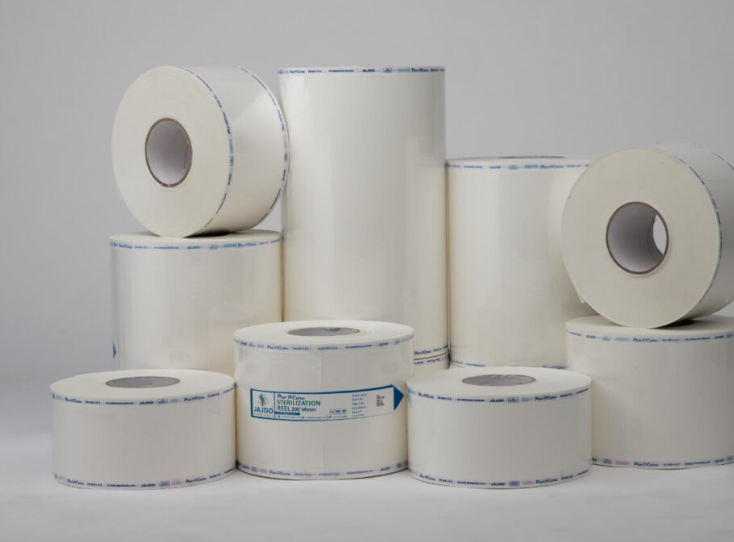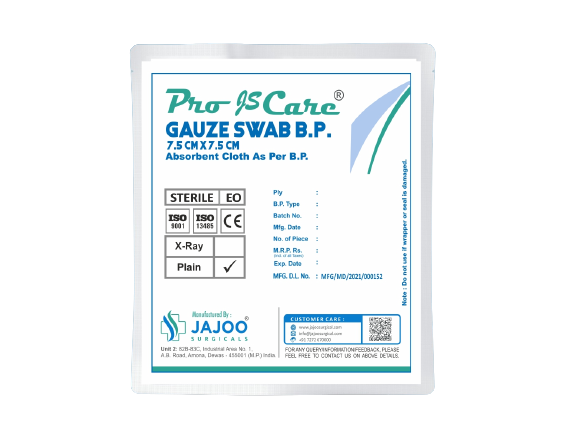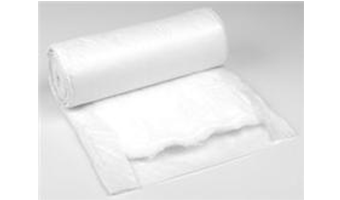In the field of medical and surgical care, maintaining proper sterilization is not just a necessity— it’s a matter of patient safety and clinical excellence. Every hospital, clinic, and diagnostic center depends on high-quality sterilization rolls to keep instruments sterile until use. These rolls act as protective barriers that maintain the sterility of surgical instruments after they’ve been processed in autoclaves or other sterilization systems. However, like any other medical supply, sterilization rolls come with their own set of challenges that can compromise their effectiveness if not handled correctly.
At Jajoo Surgicals, a trusted name in healthcare packaging and sterilization products, the focus is always on ensuring reliability, safety, and performance. This comprehensive guide explores the common issues with sterilization rolls, how they occur, and effective ways to address them. We’ll also discuss best practices, ideal Sterilization roll uses, the importance of proper sealing, and how choosing the right Sterilization roll Sealing Machine can make all the difference.
1. Common Issues with Sterilization Rolls
Sterilization rolls are designed to maintain sterility until the point of use. However, improper handling, storage, or sealing can lead to performance issues that affect safety and efficiency. Below are the most frequent problems healthcare professionals encounter when working with
Common issues with sterilization rolls include package damage (tears, holes), moisture ingress (“wet packs”), and improper use like overloading, incorrect wrapping, or poor handling. These problems can result from inadequate pre-cleaning of instruments, using expired or damaged rolls, and incorrect loading or cycle selection in the sterilizer.
sterilization rolls:
- Poor Sealing Quality
One of the most frequent and critical problems is inadequate sealing. If the seal is weak, uneven, or incomplete, the sterile barrier can be compromised. This happens due to incorrect temperature settings on the Sterilization roll Sealing Machine, faulty rollers, or improper alignment of the film layers.
A poorly sealed roll allows bacteria, dust, or moisture to enter the pack, rendering the contents non-sterile. Regular testing and maintenance of sealing machines are crucial to prevent this issue.
b. Incompatible Sealing Temperature
Every sterilization material—whether paper-poly or Tyvek—requires specific sealing temperatures. When the heat is too low, the seal remains incomplete; when too high, the paper may burn or melt, weakening the bond. Users must refer to manufacturer guidelines for correct sealing parameters for each Sterilization Pouch Roll Size.
c. Uneven Sealing Pressure
If the pressure applied during sealing is uneven, wrinkles and air gaps can form along the seal line. These imperfections can create leakage points that allow contamination. Ensuring that the Sterilization roll Sealing Machine applies consistent pressure across the sealing surface helps maintain uniformity and reliability.
d. Storage-Related Issues
Even the best-quality sterilization rolls can fail if stored incorrectly. Humidity, direct sunlight, or extreme temperatures can damage the paper-polymer layer, making it brittle or sticky. Rolls should always be stored in cool, dry environments, away from direct UV exposure, to maintain their structural integrity.
e. Overfilling or Underfilling Packs
Incorrect packing of instruments is another common issue. Overfilled packs can cause bursting during sterilization, while underfilled ones may lead to incomplete sterilant penetration.
Choosing the correct Sterilization Pouch Roll Size for the instrument load ensures even distribution and effective sterilization.
f. Improper Cutting and Handling
Cutting the rolls incorrectly can cause micro-tears or irregular edges that affect sealing efficiency. Always use clean, sharp cutting tools and handle the rolls gently to avoid mechanical damage.
g. Moisture and Condensation Problems
Post-sterilization condensation within the pack is a common issue that can lead to recontamination. This typically occurs due to improper drying cycles, poor packaging material, or too-tight sealing. Selecting the right Sterilization Reel 75mm or larger sizes based on load helps maintain airflow and proper steam penetration.
h. Indicator Ink Malfunction
Most sterilization rolls are equipped with chemical indicators that change color when exposed to sterilization conditions. If these indicators don’t change as expected, it may signal poor- quality ink, incorrect sterilization parameters, or expired packaging material.
2. Understanding the Purpose and Function of Sterilization Rolls
Before addressing issues, it’s essential to understand the purpose of sterilization rolls in the healthcare system. These rolls are made from high-quality medical-grade paper and transparent film, designed to allow sterilizing agents—such as steam, ethylene oxide (EO), or plasma—to penetrate and sterilize the contents.
Their primary purpose is to act as a physical barrier against contaminants while allowing sterilization agents like steam or gas to penetrate and sterilize the contents effectively. They function by protecting instruments from the environment, enabling safe storage and transport until the items are needed for a procedure.
After sterilization, the seal acts as a protective barrier, maintaining sterility until the instrument is opened for use. Sterilization roll uses include packing surgical tools, syringes, catheters, dental instruments, and laboratory items. They come in multiple widths such as Sterilization Reel 50mm, 75mm, 100mm, 150mm, and beyond, ensuring versatility across various departments.
For hospitals and clinics, the main goal is to ensure that these rolls effectively safeguard instruments from microorganisms. Achieving this depends on using the correct size, sealing method, and handling process.
3. The Role of Proper Sealing in Maintaining Sterility
The sealing process is one of the most vital steps in ensuring the effectiveness of sterilization packaging. It’s not enough to have high-quality rolls—how they are sealed determines their reliability.
a. Choosing the Right Sealing Equipment
A Sterilization roll Sealing Machine ensures uniform sealing with consistent temperature and pressure. Automated machines with digital displays are ideal for modern hospitals, allowing precise control and consistent results.
b. Regular Equipment Calibration
Incorrectly calibrated machines can produce seals that appear fine visually but fail integrity tests. Regularly checking and calibrating sealing machines is essential to maintain consistent sealing quality.
c. Visual and Peel Testing
Conducting seal integrity tests—such as visual inspection and peel strength tests—helps ensure that the roll maintains sterility. A proper seal should be straight, uniform, and free of gaps or bubbles.
d. Sealing Environment
Sealing should always take place in a clean, dust-free area to prevent contamination during packaging. Particulate matter on sealing surfaces can weaken adhesion and compromise the sterile barrier.
4. Selecting the Right Sterilization Roll and Size
The effectiveness of sterilization largely depends on selecting the appropriate packaging material and size for the instrument set.
a. Material Compatibility
Not all sterilization rolls are suitable for every sterilization method. For example:
- Steam sterilization (autoclave): Requires paper-polymer rolls that can withstand high humidity and temperature.
- EO sterilization: Needs rolls that allow gas permeability without losing strength.
- Plasma sterilization: Works best with Tyvek-based rolls.
Understanding the Sterilization roll uses ensures proper material selection based on sterilization type.
b. Correct Size Selection
The Sterilization Pouch Roll Size determines airflow and steam penetration. For smaller surgical instruments, a Sterilization Reel 75mm width is ideal. For larger sets, hospitals typically use 200mm or 300mm rolls. Choosing the right size minimizes waste and ensures efficient sterilization.
c. Double Sealing for Safety
For extra safety, double sealing at both ends ensures no leakage or tearing during sterilization cycles.
d. Compliance and Certification
Always choose rolls certified according to ISO 11607 standards and EN 868 guidelines. Leading manufacturers like Jajoo Surgicals provide rolls tested for microbial barrier efficiency and mechanical strength.
5. Best Practices for Handling and Storing Sterilization Rolls
Even premium-quality sterilization rolls can fail if not stored and handled correctly. Implementing best practices ensures long-lasting performance and sterility.
a. Proper Storage Conditions
Store rolls in a clean, dry, and controlled environment. Avoid direct sunlight, moisture, or temperature extremes, as they can degrade the paper-poly film structure.
b. First-In-First-Out (FIFO) System
Use the oldest rolls first to avoid expiry issues.
c. Avoid Contamination During Handling
Always wear clean gloves when handling rolls or sterilized packs. Touching them with bare hands may introduce contaminants.
d. Labeling and Traceability
Every sterilized pack should have a clear label mentioning sterilization date, batch number, and contents. This ensures easy tracking and compliance during audits.
6. Addressing Specific Problems: Step-by-Step Solutions
a. Problem: Weak or Incomplete Sealing
Cause: Low temperature or insufficient pressure during sealing.
Solution: Recalibrate the Sterilization roll Sealing Machine to the manufacturer’s recommended settings (typically 160–200°C depending on material). Check the Teflon coating and replace if worn.
b. Problem: Paper Tear During Opening
Cause: Excessive sealing temperature or poor-quality paper.
Solution: Adjust temperature settings and use premium sterilization rolls from certified manufacturers like Jajoo Surgicals.
- Problem: Seal Discoloration or Burn Marks Cause: Overheating or excessive dwell time.
Solution: Lower the temperature and shorten sealing duration. Always perform sample tests
before bulk sealing.
d. Problem: Moisture Inside the Pack
Cause: Inadequate drying after steam sterilization.
Solution: Ensure proper drying cycles and avoid overloading the sterilizer. Use rolls with balanced permeability for steam release.
e. Problem: Indicator Ink Not Changing Color
Cause: Poor-quality indicator or expired packaging.
Solution: Replace rolls with fresh stock. Jajoo Surgicals provides indicator-tested rolls that change color accurately under standard sterilization conditions.
- Problem: Burst Packs After Sterilization Cause: Overfilling or too-tight sealing.
Solution: Ensure at least a 3–4 cm margin between instruments and seal line. Choose the
correct Sterilization Pouch Roll Size for the load.
- Problem: Contaminated or Dull Instruments Post-Sterilization Cause: Damaged packaging or micro-leakage.
Solution: Perform routine integrity checks and seal validation tests. Replace any faulty
Sterilization Reel 75mm or larger rolls.
7. Why Choose Jajoo Surgicals for Sterilization Solutions
Jajoo Surgicals stands out as one of India’s leading providers of sterilization packaging solutions. Their range of sterilization rolls is designed with advanced medical-grade materials to ensure safety, compliance, and reliability in every use.
a. Superior Quality Control
Each roll undergoes stringent quality checks for tensile strength, microbial barrier efficiency, and heat resistance.
b. Variety in Sizes and Formats
From Sterilization Reel 75mm for smaller tools to 400mm wide rolls for surgical kits, Jajoo Surgicals offers customized Sterilization Pouch Roll Size options to suit diverse clinical needs.
c. Compatible with All Sealing Machines
The rolls are compatible with all leading Sterilization roll Sealing Machine brands and models, ensuring hassle-free operation and uniform sealing results.
d. Reliable Color Change Indicators
All rolls are equipped with precise chemical indicators for both steam and EO sterilization. These ensure accurate verification after each cycle.
e. Excellent Value and Durability
Jajoo Surgicals combines quality and affordability, making them a trusted partner for hospitals, clinics, and laboratories across India.
f. Sustainable and Safe Materials
The brand prioritizes eco-friendly materials that comply with international sterilization packaging standards (ISO 11607 and EN 868).
8. Preventive Maintenance of Sealing Machines
Even with top-quality rolls, sealing machine performance plays a huge role in maintaining packaging integrity.
- Regular Cleaning: Remove debris and adhesive residue from the sealing surface daily.
- Periodic Calibration: Test temperature, pressure, and dwell time monthly.
- Component Replacement: Change worn-out heating elements, Teflon covers, and rollers periodically.
- Record Keeping: Maintain logs of calibration and maintenance to ensure traceability.
A well-maintained Sterilization roll Sealing Machine ensures consistent seals, reducing the risk of contamination.
9. The Future of Sterilization Packaging: Trends for 2025 and Beyond
The sterilization packaging industry is rapidly advancing with technological innovations aimed at improving safety, traceability, and sustainability.
- Smart Indicators: New generation rolls will feature digital color codes or barcodes for instant tracking.
- Eco-Friendly Materials: Manufacturers like Jajoo Surgicals are investing in recyclable and biodegradable roll materials.
- AI-Based Seal Quality Testing: Future sealing machines may include smart sensors that automatically verify seal integrity.
- Customized Roll Designs: Hospitals will soon be able to order pre-printed rolls customized with their logos, sterilization type, and tracking details.
These advancements will make sterilization processes safer, more efficient, and environmentally conscious.
10. Conclusion
Proper sterilization is the cornerstone of patient safety—and sterilization rolls are an integral part of that process. While common issues such as poor sealing, humidity exposure, and incorrect sizing can compromise their performance, these challenges can easily be mitigated through careful selection, proper handling, and the right sealing equipment.
Hospitals and clinics that invest in quality rolls, such as those from Jajoo Surgicals, benefit from superior reliability, consistent performance, and peace of mind. From the precision of the Sterilization roll Sealing Machine to choosing the correct Sterilization Pouch Roll Size or Sterilization Reel 75mm, every detail matters in maintaining sterility and ensuring patient safety.
By understanding Sterilization roll uses and following best practices in storage, sealing, and maintenance, healthcare professionals can eliminate most common issues and achieve flawless sterilization every time. In an era where infection control and hygiene are paramount, choosing the right partner—like Jajoo Surgicals—makes all the difference between good and exceptional care.






